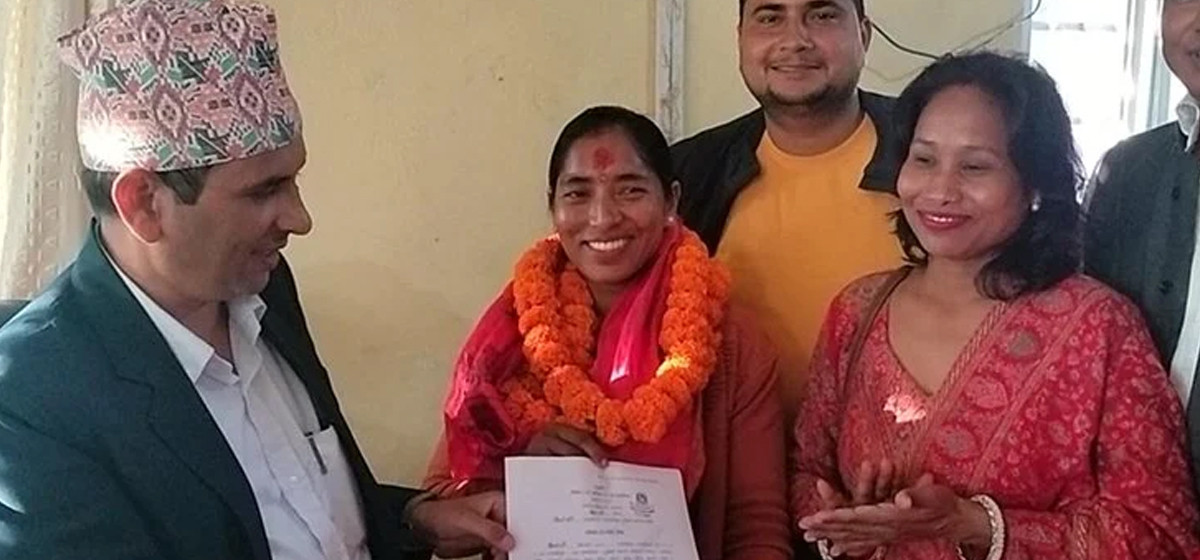Many people have misconception that deforestation will begin right after the Ministry approves the proposal for airport construction. It does not work that way
Understanding the politics of land use is challenging because there are numerous actors involved: national and regional government sectors including environmental bodies, flora and fauna conservation body, contractors, NGOs and locals as well as indigenous communities. Along with the increasing trend of finding new development pathways it’s even more important to understand how these stakeholders work collectively or present counterviews in course of using land for big development projects. The construction plan of Nijgadh International Airport is also passing through same phase, putting the future of the project in uncertainty.
After the Supreme Court directed the government to halt the construction of Nijgadh Airport until the final verdict, Minister for Tourism and Civil Aviation Yogesh Bhattarai has said that he is ready to explain to the apex court why there is no alternative to constructing the proposed airport in Nijgadh. He further claimed that some groups of people are trying to derail the project by bringing out highly exaggerated number of trees that need to be felled and a fictitious data related to the environmental impacts.
Missing the forest
A joint five-year survey conducted by the Department of Forest Research and Survey and National Forest Products Survey Project between 2010 and 2014 shows that of the total 147,181 square kilometres area of Nepal, forest area makes up 44.74 precent. Of it, 40.36 precent is covered by forest and remaining 4.38 precent is scrubland. Going by this data, 44.74 precent land covered by forest means Nepal currently possesses around 5,962,438 hectares of forest.
Health Ministry refutes rumor of third COVID-19 death in Nepal

At present, the first phase of Nijgad Airport project demands total of 2,556 hectares forest areas. Even if the required area is completely deforested, Nepal still will have 5,959,882 hectares of forest areas. In short, the amount of area proposed to be deforested for Nijgadh Airport covers only 0.0428 percent of our total forest areas.
Of course, forest area is important but cost-benefit analysis (CBA) outweighs environmental aspect in case of Nijgadh airport.
Despite its national importance and shared political determination of ruling as well as opposition parties, there has been little or no progress on this project, despite the fact that the project was conceptualized in 1995. Back then, Nijgad was chosen as the best destination for building international airport taking into consideration various aspects such as runway orientation, land feature, distance from major towns, road accessibility, airspace holding pattern, availability of land among others. Besides, Nijgadh, located in central Tarai, is close to Kathmandu, only one hour away once Kathmandu-Nijgadh fast-track comes into operation.
Suitable location
If we analyze other international airfields, the airport and main city are within an hour’s drive. Thus Nijgadh stands at a very reasonable distance from Kathmandu. Since the airport area stands at 27 kilometers from Indian border and 45 kilometers from our western boundary, the control zone of 10 nautical miles will come under Nepali airspace. And it will further make easier for holding, taking required altitude and landing without any disturbance. Furthermore, the airport will remain at the distance of 20 kilometers from nearby Parsa Wildlife Reserve. Thus planes will cause minimum noise pollution on the wildlife habitat. The proposed airport area is between Pasaha River on the east and the Bakaha River on the west. There are no other rivers/rivulets which need to be controlled.
Though Ministry of Culture, Tourism and Civil Aviation looks determined to push this project, criticism regarding Environmental Impact Assessment (EIA) has added to the controversies.
It is clear that some people have been spreading exaggerated rumors regarding the number of trees to be cut down for construction of Nijgad airport. The estimated 8045 hectares land coverage also comprises control area of Airport which serves for post-landing operation including turning and maneuvering of airplane. The actual area needed to construct the airport is 2556 hectares. And of that only 1084 hectare land is required during initial phase of construction which later will be extended in accordance with future demand.
Second, the criticism regarding government’s insistence to construct airport before Detailed Project Report (DPR) is finalized also demands rational explanation. Many people have misconception that deforestation will begin right after the Ministry approves the proposal. It does not work that way. The construction will undergo different phases, each loaded with precise purpose. The first phase involves EIA which has already been approved. In the second phase, certain area will be estimated for airport considering future necessities. Then other project studies along with DPR will actually determine the actual amount of land to be used and trees to be cut down. Then only the deforestation will begin.
According to the report by Civil Aviation Authority of Nepal (CAAN) the airport would be able to handle 20 million passengers annually in the first phase. CAAN has proposed to build 4,000-metre runway and 100,000-square meter international passenger terminal building. Nijgad Airport is counted as one of the biggest projects in the world and after its completion it is expected to become the potential transit hub of Asia pacific region.
Furthermore, it will function as international air centre directly contributing to national economy. International flights from more than 20 cities will be landing every day. Millions of travelers will catch connecting flights from this platform. It will be greater, more advanced and busier than any other airport in Nepal. Likewise, it’s estimated that over 54 percent international tourists travel to their destination by air. The future connectivity expected from Nijgadh international air transport will also help promote global tourism inside Nepal.
Thus, we should consider environmental aspect but we should also not lose sight of how this mega project will benefit Nepal in the long run.
The author is a senior researcher at Pioneer Research Center Nepal (PRCN) based in Kathmandu
































